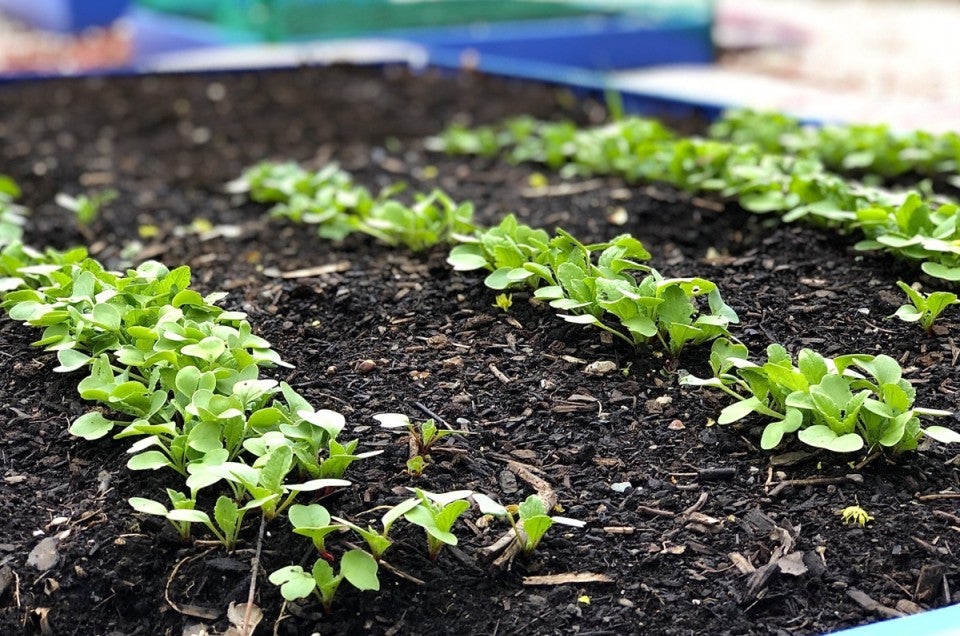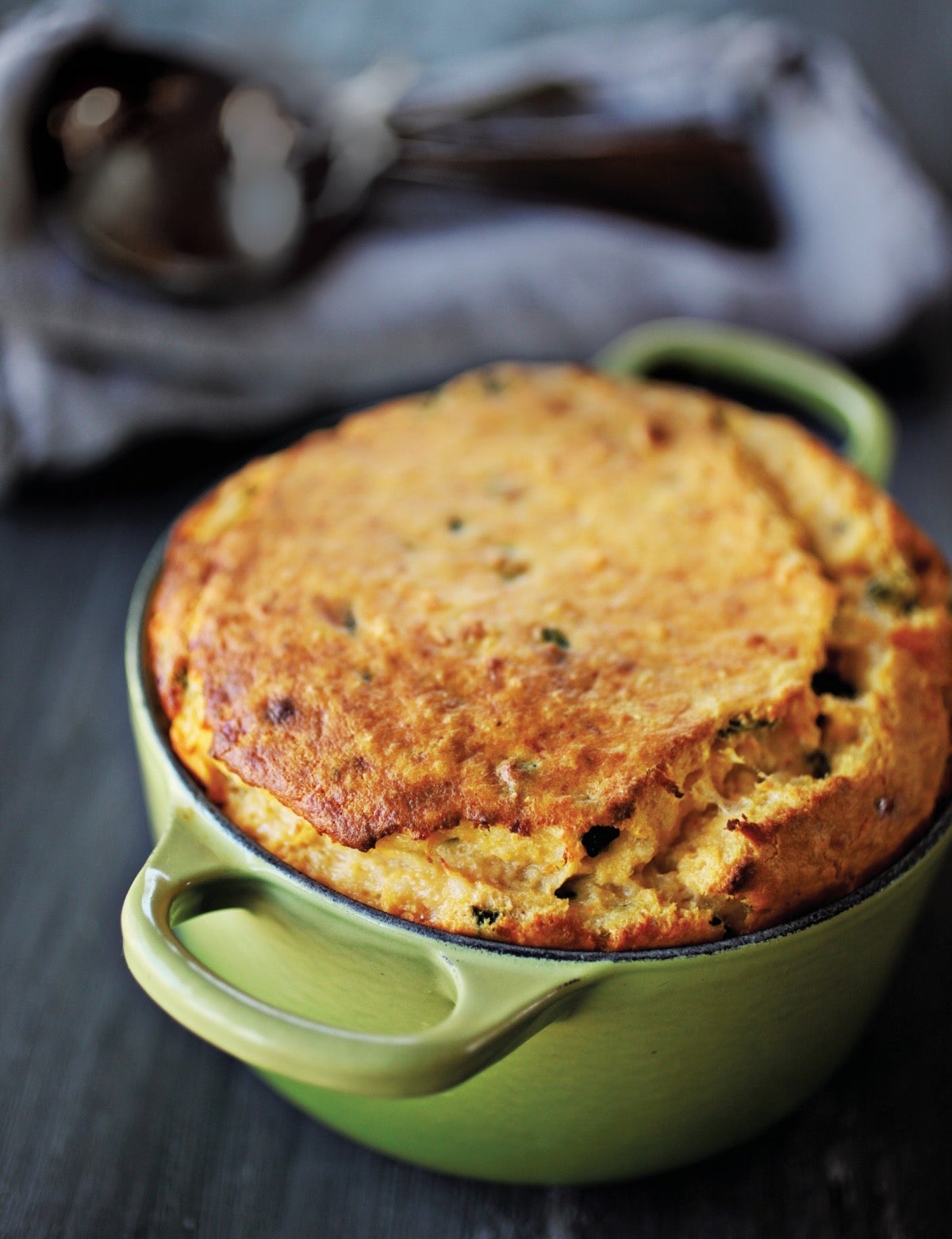


First a shortage of yeast whipped up a nationwide frenzy for homemade sourdough bread.
Next the unpredictable availability of both butter and eggs has left some bakers empty-handed and disappointed, while those lucky enough to find the dairy case full are wondering if “stocking up” is considered hoarding.
And now, who knows whether fresh local herbs and vegetables will be available this summer?
Nothing beats going into the dewy early morning to snip some fresh chives for your biscuits, or pluck a few tomatoes right off the vine for tonight's pizza.
Many of us look forward all year to our town's farmers' market, where crowds gather weekly to stock up on fresh fruit and vegetables, homemade bread and preserves.
Once crowds were a good thing; now they’re forbidden. What to do? One market near me has already mapped out their new normal: gloves and masks for farmers and customers alike; no touching any of the produce; one customer at a time at each stand, and no dogs. Certainly not the happy, relaxed experience it’s always been.

But then, life isn’t what it was four months ago. We’ve dealt with standing in line to get into the supermarket, enduring bad hair days on a seemingly permanent basis, and desperately missing hugs from close friends. Will this summer mean no farm stands, no farmers’ markets — and no wonderfully fresh local produce to incorporate into your favorite baked treats?

Thankfully, many garden centers are open for business despite COVID — yes, they really are essential! Potted herbs and vegetable seedlings are green and ready to grow. Even if you’ve never before turned over a single clod of earth, now's the time to start a kitchen garden.
And don’t tell me you have a black thumb! I thought I did, too, until I started growing tomatoes a dozen years ago in a single above-ground container. My early success has led to raised garden beds all over my backyard filled with not just tomatoes, but winter and summer squash, asparagus, beets, radishes, lettuce, cucumbers, and a multitude of herbs.

If you’ve never gardened, start small; you almost can’t go wrong with tomatoes, so long as your yard or deck gets some strong sun. If you don't want to dig up the yard (or don't even have a yard), plant tomatoes in a "grow bag" or container, something that can be moved around. In fact, most herbs and vegetables can be planted in above-ground containers; see a full selection of containers (plus the hand-holding you need to get started) at Gardeners’ Supply, our fellow Vermont employee-owned company.

Here in New England, the end of May is the time to get all your summer veggie seedlings into the ground. So whether you’re a complete newbie or already a seasoned gardener, make your plan and start planting now — if you haven’t already. What better way to stay home as advised, yet still get a ton of exercise and fresh air?
Now, what does (or should) your garden grow? If you’re a baker, plan on planting what you love baking with the most. Because you can never have too many tomatoes for your homemade roasted tomato pizza — or pumpkins for your pie.
Focaccia? Not the same without fresh rosemary.

And what’s a summer sandwich without a few leaves of basil or a schmear of parsley pesto?
If you're still on the fence about what to grow, here are some of the vegetables and herbs (literally from A to Z) that are particularly suited to baking.

While it takes a few seasons to really get going, asparagus comes back year after year and is incredibly low maintenance. Just snip off the spears, roast, and use them to fill or top savory breads, strata, or pastries.


Beets are resistant to cold weather, so they're always fun to plant early in the season when you're itching to get something — anything — into the ground.
While they're not usually thought of as a baking ingredient, beets are delicious sliced and roasted, then added to any recipe calling for root vegetables, like this Roasted Root Vegetable Pie.

Roasted beets are also a delectable pizza topping: witness this variation on our 2020 Recipe of the Year, Crispy Cheesy Pan Pizza, featuring roasted beets, feta cheese, sliced Meyer lemons, and arugula.

Butternut squash, like its close siblings zucchini and pumpkin, likes to wander. Its vines will reach out and clutch everything in sight, so be sure to give it plenty of room: plant it away from your other vegetables or, barring that, be prepared to do some judicious trimming.
Roast, peel, and purée butternut squash and use it just as you would pumpkin, in muffins, bread, scones, baked doughnuts, and cake. Its golden interior adds lovely color and mild flavor to all kinds of baked treats.

Roasting brings out squash's flavor. Peel squash, chop it into cubes, toss with oil and roast until golden, then nestle it in a flaky pastry crust, as we do in this Roasted Butternut Squash & Spinach Quiche.

This member of the onion family grows like a weed: fast, furious, and hard to kill! Even as far north as southern New England chives often winter over, meaning you can go snip a few tablespoons for your scones, biscuits, or dumplings any time of the year.
Chives are mild-flavored and slim-stalked; they offer gentle onion flavor and, when chopped, disperse nicely throughout your favorite savory scones and biscuits. They're also a colorful garnish atop quiche or breakfast casseroles like strata.


Basil is well-known for its role in Neapolitan pizza, while cilantro is a mainstay of both Asian and Latino cooking (think salsa). But from garlic bread to mushroom strudel to dog biscuits, parsley is your most versatile team player.
Use parsley as a garnish when you're not chopping it into (or atop) all manner of pizzas, pasta, and breads. One lesser-known use for parsley, and a place it really shines: pesto. While basil is the typical pesto herb, parsley makes a spread that's just as tasty — and even better, doesn't fade to khaki but stays bright green indefinitely.


Peppers, like many of their Mediterranean-type cousins (eggplant, tomatoes), like hot weather: lots of sun and lots of water will keep them happy and producing. Choose your favorites, from hot jalapeño to mild green bell, with lots in between to explore. (Did you know red bell peppers are simply green bells that have ripened?)
What do do with peppers? Since they can exude a lot of liquid when baked, they're best cooked beforehand; roasting or grilling are simple ways to bring out their best.


Why grow your own potatoes — is there really that much difference between homegrown and purchased? In my experience, yes. Homegrown potatoes somehow taste more potato-y, ready to add their rich, earthy flavor to many types of bread, rolls, and flatbreads.
Potatoes are nearly always cooked before being used in baking.

Mashed potatoes add wonderful moistness and flavor to bread or rolls; they're the star ingredient in these soft Amish Dinner Rolls.

Thin-sliced potatoes are fried briefly, just to soften, then used atop this Potato Focaccia, along with charred onions and fresh rosemary.

Like all members of the squash family, pumpkins are easy to grow. Just be aware their vines and giant leaves will try to take over your entire garden, so either give them plenty of room or segregate them where they won't bother smaller plants.
Ever thought about making your own pumpkin pie filling? Plant sugar pumpkins. These cantaloupe-sized squash offer mildly sweet, light-gold flesh, ideal for pie, scones, muffins, or any other pumpkin treat.

While most people have made pumpkin quick bread, pumpkin also makes gorgeous, bright-gold dinner rolls or a sandwich loaf — like this Pumpkin Yeast Bread.

These familiar leafy green members of the onion family are best planted in early spring. So while you may have missed your window this time around, keep them in mind for next year. Unlike most vegetables, scallions require only a couple of inches between each plant, making them an excellent choice for small gardens.
How do you use scallions in baking? Well, they're both low-moisture and fairly tender, which means they don't require any pre-cooking. Chop and add is the way to go; just be sure to trim off the roots at one end, and any dry fronds at the other.

Sometimes scallions play a starring role, as in these absolutely addictive Scallion Pancakes with Dipping Sauce.

Other times they add color to baked goods that might otherwise appear pretty plain, like these Cheddar Cheese and Scallion Scones, a tasty accompaniment to eggs at breakfast or soup at lunch.

I'd be hard-pressed to go through a summer without fresh-from-the-vine tomatoes. I believe there's a more striking difference between just-picked and store-bought tomatoes than in any other vegetable: fresh tomatoes are unbelievably flavorful.
I love cherry tomatoes (Sweet Millions and Sungolds are my favorites) for eating out of hand and salads. They're also wonderful stir-fried just until soft, then used as pizza or flatbread topping.

Make your own version of sun-dried tomatoes simply by slicing, drizzling with oil, and roasting full-sized tomatoes for 2 to 3 hours in a slow (300°F or so) oven. The result is meaty, toothsome tomatoes with marvelous concentrated flavor.

Chopped slow-roasted tomatoes add both color and flavor to a favorite summer loaf, cheese-swirled Pane Bianco.

At last! Guess which vegetable is holding down the end of the alphabet? Zucchini, which I feel is unfairly maligned due to its late-summer ubiquity: it simply grows like crazy. Unless you pay close attention you're liable to find fat bowling pin-sized zukes hiding under their enormous leaves. Unfortunately, these monsters are tougher and less flavorful than their younger selves; so try to harvest zucchini when they're 12" long or less.
Thanks to its mild flavor and high water content, zucchini is the baker's best natural moisturizer. Quick breads and muffins made with grated zucchini are invariably super-moist and tender.

Chocolate Zucchini Cake may sound weird, but its simply one of the moistest, most chocolate-y cakes you'll ever enjoy — without a hint of vegetable flavor.

On the other hand, Zucchini-Cheese Pancakes showcase rather than hide their main ingredient. Reminiscent of potato pancakes, they're a quick and easy way to make a dent in your bountiful harvest!
Hopefully you're now inspired to get outside and start readying your plot, raised bed, container, or grow bags for a garden. If nothing else, grow herbs. Or tomatoes in patio pots. Nothing beats going into the dewy early morning to snip some fresh chives for your biscuits, or pluck a few tomatoes right off the vine for tonight's pizza.

And then there's the visceral satisfaction of plunging your hand into damp earth and coming up with a big, fat potato. Working the land is an age-old tradition. Especially now, with life having changed so much, it's comforting to plant a garden and grow your own food — even if all you're tending is a pot of rosemary. It's time to grow green!
What does your garden grow? Please tell us in comments, below, which vegetable or herb you most look forward to baking with this summer.